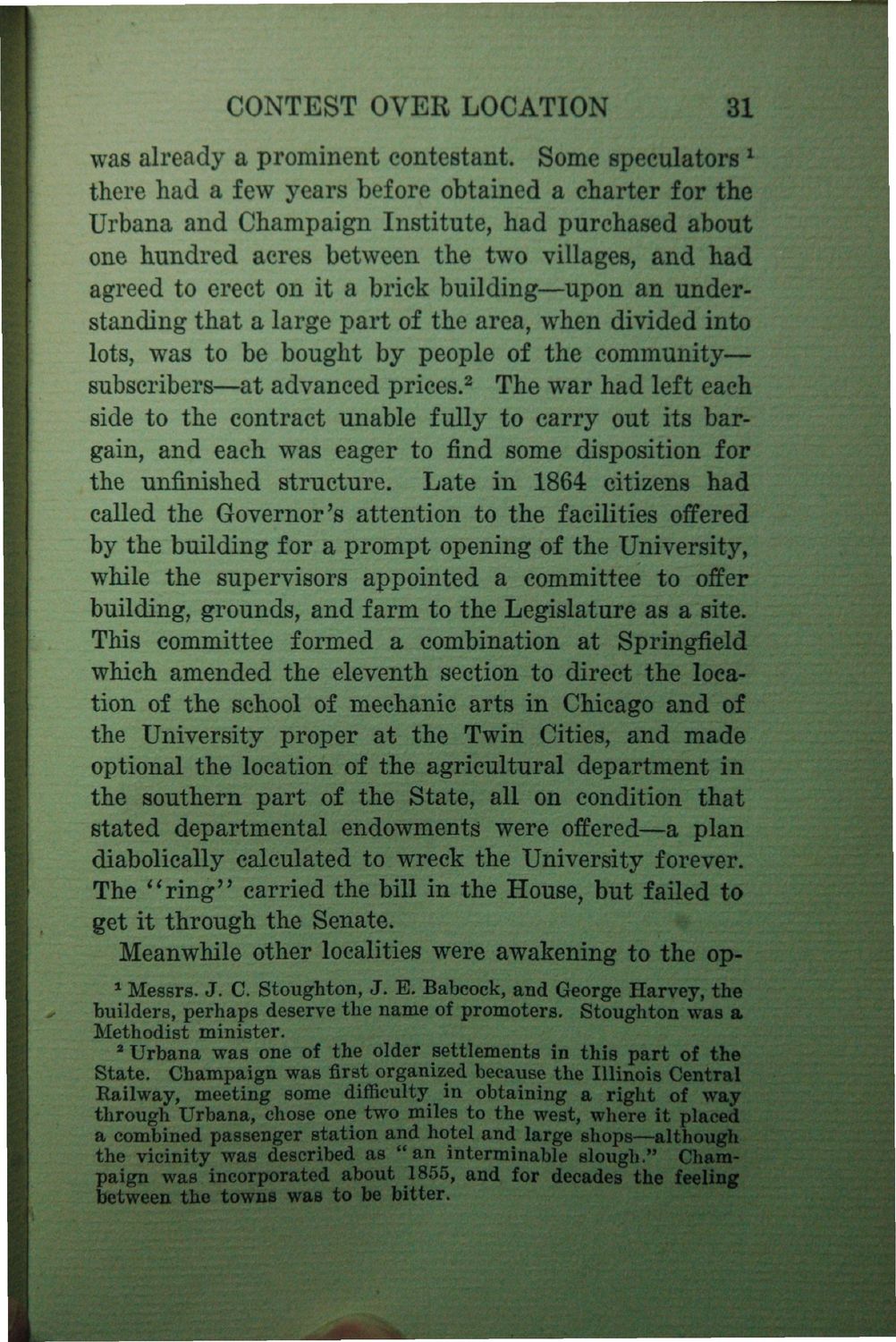| |
| |
Caption: Book - History of the University (Nevins)
This is a reduced-resolution page image for fast online browsing.

EXTRACTED TEXT FROM PAGE:
CONTEST OVER LOCATION 31 was already a prominent contestant. Some speculators * there had a few years before obtained a charter for the Urbana and Champaign Institute, had purchased about one hundred acres between the two villages, and had agreed to erect on it a brick building—upon an understanding that a large part of the area, when divided into lots, was to be bought by people of the community— subscribers—at advanced prices.8 The war had left each side to the contract unable fully to carry out its bargain, and each was eager to find some disposition for the unfinished structure. f| Late in 1864 citizens had called the Governor's attention to the facilities offered by the building for a prompt opening of the University, while the supervisors appointed a committee to offer building, grounds, and farm to the Legislature as a site. This committee formed a combination at Springfield which amended the eleventh section to direct the location of the school of mechanic arts in Chicago and of the University proper at the Twin Cities, and made optional the location of the agricultural department in the southern part of the State, all on condition that stated departmental endowments were offered—a plan diabolically calculated to wreck the University forever. The " r i n g " carried the bill in the House, but failed to get it through the Senate. Meanwhile other localities were awakening to the opMessrs. J. C. Stoughton, J. B. Babcock, and George Harvey, the builders, perhaps deserve the name of promoters. Stoughton was a Methodist minister. * Urbana was one of the older settlements in this part of the State. Champaign was first organized because the Illinois Central Railway, meeting some difficulty in obtaining a right of way through Urbana, chose one two miles to the west, where it placed a combined passenger station and hotel and large shops—although the vicinity was described as " a n interminable slough." Champaign was incorporated about 1855, and for decades the feeling Between the towns was to be bitter. 1
| |